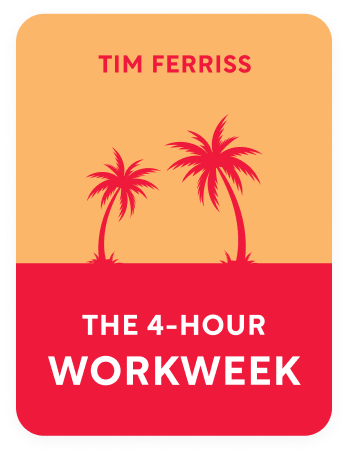

This article is an excerpt from the Shortform book guide to "The 4-Hour Workweek" by Tim Ferriss. Shortform has the world's best summaries and analyses of books you should be reading.
Like this article? Sign up for a free trial here .
What is fear setting? How can fear setting help you understand your goals and priorities?
Fear setting is the process of working through your fears by defining them honestly. This ability can help you see your fears rationally, and then take calculated risks.
Read more about fear setting and how it works.
Face Your Fears
The main thing that stops people from living the 4HWW lifestyle is fear. Fear of failure and the unknown are paralyzing, and facing these fears is so intimidating that most people would rather be unhappy.
Additionally, there’s a less-recognizable subset of fear of the unknown that affects many of us—optimistic denial. If your job isn’t absolutely awful, then you pretend it’ll get better or pretend you’ll get a raise and the money will make everything better. You’ll keep on pretending instead of doing something life-changing that would actually make you happier. To figure out if you’ve fallen prey to optimistic denial, think back to a month or a year ago. Are things better now than they were then? If they’re not, there’s no reason to expect them to improve over another year.
“Fear Setting”
The best way to work through your fears is to define them, or “fear-set.” Once you have a better handle on what exactly you’re worried about, it becomes less frightening. Also, once you’ve quantified your fears into specific scenarios with fear setting, you’ll be able to see ways to avoid negative consequences.
There are six questions to ask yourself when fear setting. They aren’t simply a mental exercise; actually write out your answers. Go through the questionnaire twice, once while thinking of something you’d like to do, and the second time while thinking about quitting your job. The questions are:
1. What is the worst-case scenario? On a scale of 1-10, one being the lowest, what would be the permanent cost of your actions? How likely is it that the very worst would happen?
- Shortform example: Burt wants to sail around the world. His business could fail while he’s away, someone might steal his stuff, and his boat might sink. He gives each of these possibilities a 5 because he can start a new business, buy new stuff, and be rescued by the Coast Guard.
2. If the worst did happen, how would you fix it? Consider how you’d get back to where you were before you changed anything. How would you get your finances back on track? Even a temporary fix is a good start.
- Shortform example: Burt could take a temporary job to recover his finances. He could replace his stolen stuff or do without it for a little while. If he has a terrible time, he doesn’t have to go sailing again.
3. What are the more likely scenarios, and what are their outcomes? Consider both internal (developing your character) and external. On a scale of 1-10, what is the permanent cost of the actions? How likely is it that you would get a positive outcome?
- Shortform example: Burt comes up with three more likely scenarios: his trip gets cut short because his mast snaps, his business struggles but doesn’t fold, or he has an amazing time. He thinks the first two are possible but not permanent and gives them both a 2. He thinks the last one’s very likely and the permanent “cost” would be his happiness. He gives this possibility a 9.
4. What aren’t you doing because you’re scared? Usually, the things that you’re scared of are the things that are the most important to do. (The author believes that one measure for success is the number of uncomfortable conversations we’ve had.) Accept that the worst-case scenario is a possibility, but risk it anyway.
- Shortform example: Burt is scared to ask his boss for time off and go through the complex negotiations of buying a boat.
5. What are you losing by not acting? The previous four questions focused on the downsides of doing things; now focus on the downsides of not doing them. Later in life, will you consider this inactive time wasted? Inaction can be the worst-case scenario, because it can create a permanent (once your lifetime’s gone, it’s gone) negative outcome (being unhappy).
- Shortform example: Burt’s missing out on something he’s wanted to do for his entire life.
6. Why aren’t you acting? There’s a good chance your go-to answer is timing, which isn’t a good reason (recall the nine rules to breaking the rules). Probably, you’re not acting because you’re scared to.
- Shortform example: Burt hasn’t gone sailing yet because he’s scared.

———End of Preview———
Like what you just read? Read the rest of the world's best book summary and analysis of Tim Ferriss's "The 4-Hour Workweek" at Shortform .
Here's what you'll find in our full The 4-Hour Workweek summary :
- The 4-step process to live a "retired" lifestyle now
- Find out if you're wasting the best years of your life working a 9-5
- How to create a business that makes you money without sucking up your time






